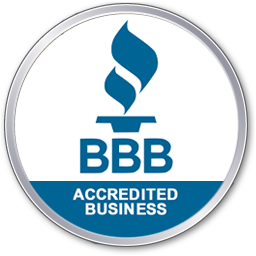If you’ve ever owned a suit, silk dress or other delicate professional wear, chances are you’ve been to a dry cleaner.
Dry cleaning services are common in the U.S. According to the Centers for Disease Control and Prevention (CDC), it’s estimated that there are roughly 38,000 dry cleaning shops located across the country. Dry cleaning is useful for removing dirt, stains and odors from fragile fabrics like wool, leather and chiffon. It can also be used to remove tough, stubborn stains that simply won’t come out in the wash.
Unlike the washing machine you may have at home, dry cleaners use chemical solvents to clean your clothes. This process eliminates the use of soap and water to help delicate clothes retain their original look, feel and fit. Clothes are then pressed to rid them of wrinkles.
While dry cleaning is a convenient service, it’s not convenient to remediate a property that previously housed a dry cleaning shop. The chemical solvents used in the cleaning process can be dangerous and pollute the surrounding area if they aren’t managed properly.
For this reason, dry cleaning is performed inside special machines that extract the solvents for reuse after each cleaning, helping to prevent them from being released into the air, water or ground. But unfortunately, improper handling of these chemicals and equipment can lead to leaks that may pollute natural elements on or near the property. This contamination may outlast the shop’s existence and can make it a challenge for the land to be redeveloped for other uses.
Here, we’ll take a look at the types of chemicals used in dry cleaning, their associated risks and how prior dry cleaning properties that are now brownfield sites can be remediated for future use.
Dry scouring, the predecessor to modern-day dry cleaning, was first patented in 1821 by Thomas Jennings, who is presumed to be the first Black individual to receive a U.S. patent for his work.
Like the dry cleaners we have today, early methods of dry cleaning used chemical solvents to clean clothes, but they relied heavily on the use of kerosene as the solvent of choice. Because kerosene is extremely flammable, most dry cleaners switched to using a chemical called perchloroethylene (also known as perc or PEC) after World War II. Perc became the industry standard and has been used for decades, with an estimated 85% of U.S. dry cleaning shops using it as their primary solvent, according to the CDC.
But as perc grew in popularity, research began to show the chemical was linked to several environmental and health risks, including being identified as a likely human carcinogen. These findings led the U.S. Environmental Protection Agency (EPA) to ban dry cleaning machines using perc from residential buildings.
The ban, which was outlined in the EPA’s 2008 National Perchloroethylene Air Emission Standards for Dry Cleaning Facilities, required all perc machines to be phased out of dry cleaning shops that were co-located with residential buildings by 2020. It also introduced new controls on perc emissions from dry cleaners, including:
Some states have taken the EPA’s ban a step further to ban the use of perc by dry cleaners altogether, including Minnesota and California (effective beginning in 2023). Several cities have also implemented their own bans, with some offering financial and/or technical assistance to help dry cleaners cover the cost of the switch and make it easier. Because many dry cleaning shops in the U.S. are run by small businesses, they may not have the resources to change to alternative cleaning methods.
These requirements come as more environmentally friendly solutions have been introduced as options for effective dry cleaning. According to the EPA, alternative spotting agents include:
These spotting agents were shown to be less expensive and have a lower toxicity than perc in a study conducted by the Institute for Research and Technical Assistance and sponsored by the EPA. They also proved to be just as effective as perc and other commonly-used hazardous chemicals such as trichloroethylene (also called TCE). The study included dry cleaning shops that used perc alternatives such as hydrocarbon, Green Earth, carbon dioxide and water-based cleaning processes.
Even if the proper equipment and methods are used, there is still a chance that solvents will escape, leading to risks of human and environmental exposure. Dry cleaning chemicals like perc and TCE can penetrate foundations and contaminate soil and groundwater sources.
If you are trying to remediate a brownfield site that was previously used for dry cleaning, you might uncover contamination outside of the building during an environmental site assessment. If that’s the case, you’ll likely require soil and groundwater remediation. This will need to be completed before the brownfield can be redeveloped.
If chemicals are released from contaminated soil or groundwater and become airborne, vapor intrusion can also become an issue. This vapor will usually enter the lowest level of a building through cracks in the foundation, walls or floors.
Dry cleaners and gas stations are the most common culprits of vapor intrusion problems at brownfield sites. If the issue goes undetected, it can have negative effects on both the environment and the health of individuals nearby, as it contaminates breathable air. This can also be an issue outside of buildings by affecting busy sidewalks, streets or surrounding common areas.
While kerosene and perc are the most notable contaminants you might find during remediation of a prior dry cleaning site, other pollutants are also possible. The full list includes:
Remediating a brownfield site that used to house a dry cleaning shop can be a huge undertaking, but it can also be rewarding if the brownfield site is in a prime location. Brownfield remediation will require thorough site assessments, potential dry cleaning-related chemical remediation and gathering the right permits and approvals.
By taking ample time to ensure the site is free of hazardous chemicals, you’re not only reducing possible impacts to human health or the environment – you’re also decreasing your liability. The presence of chemicals is the sole responsibility of the property owner, even if you weren’t the one who caused the contamination or didn’t know it was there.
Brownfield remediation turns previously developed land that was abandoned and potentially polluted with hazardous chemicals into something that can benefit the community. The remediation of a brownfield site can:
If you are considering remediating a dry cleaning site, it’s important to first speak with an environmental consulting agency to ensure you understand the risks and required steps. The professionals at Alpha Environmental are equipped to properly remediate dry cleaning and other brownfield sites to be used for commercial or residential use. Our service offerings include:
Our team can help with every step of the process. Call us at 503-292-5346 or contact us online today for a free brownfield remediation estimate.


